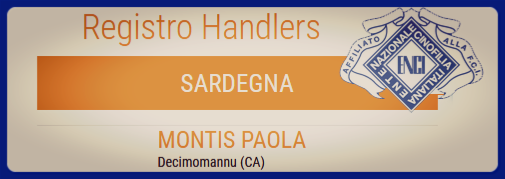It allows traders to gain experience and confidence without risking their capital. It also allows traders to test their strategies and learn from their mistakes without incurring any actual losses. Moreover, it enables traders to get familiar with the trading platform, order entry system, and risk management tools. Starting out with a paper trading account can help shorten your learning curve.
- Just be sure that you are focusing on learning as much as possible—especially if you dive into a market like forex—and not worrying too much about how much play money you end up with.
- If you’re just starting out and don’t have much experience with paper trading or you don’t know how it can help you improve, here are a few valuable tips.
- The results are likely to be discouraging, forcing the next step in the new trader’s educational process, in turn requiring additional paper trading and data sets.
- Not only that, but paper trading also excludes many of the numerous fees and something called slippage, that are part of the real trading world.
- However, trading by its nature always deals with uncertainty and risks.
Are you ready to dive right in and try your hand at some paper trades? Well before you can test out your new stock market strategies there are some steps you should follow to get started paper trading. Then you will want to download one of the leading apps for stock trading which will let you simulate trades. Or, if forex is your thing, get an account with a popular forex broker and open a demo account—this is synonymous to a paper trading account.
Online brokers such as TradeStation, Fidelity and TD Ameritrade’s thinkorswim, offer clients paper trading simulators. Paper trading, also known as simulated trading or virtual trading, is a practice of trading securities using simulated accounts without involving real money. It allows traders to test their trading strategies in a simulated environment that mimics the real market without risking real capital. With the development of online trading platforms, many online brokers (such as Interactive Brokers, Thinkorswim by TD Ameritrade, etc.) offer clients paper trading simulators.
In this article, we will explore the concept of paper trading in detail, its benefits, and how to set up a paper trading account. Of the online brokers that NerdWallet has reviewed, the following offer paper trading accounts. We’ve excluded paper trading accounts that are only a part of a limited demo version of the product. Note that some of the brokers below may require opening and funding an account before gaining access to the paper trading account. When you place trades in a live account, you risk real money, so your trading decisions have consequences.
It’s important to keep in mind there are still some differences between simulated and live trading. On a technical level, simulators may not account for slippage, spreads or commissions which can have a significant impact on day trading returns. On a psychological level, traders may have an easier time adhering to trading system rules without real money on the line—particularly when the trading system isn’t performing well. But if you can keep this in mind, and treat your paper trading account just as you would a real account, you’ll be able to transition from paper trading to real stocks in no time at all. Not only that, but paper trading also excludes many of the numerous fees and something called slippage, that are part of the real trading world.
Transitioning From Paper Trading to Real Trading Copied Copy To Clipboard
You should at least have an outline prepared, and know how much you want to buy of which stocks before you begin. You should additionally have days set aside when you will look at your portfolio, see how it’s doing, and make changes as you see fit. This is why you need to think of your paper trading account or literal paper trading as the real thing. You should try to be just as emotionally invested in your paper trading account as you would a real account. Below are the steps you can take to set up a paper trading account with a stockbroker. To be a successful trader, you will probably want to have a few strategies on hand when it comes to placing your money in the market.
Do you make money paper trading?
This is why only a tiny fraction of traders end up earning all the profits in the market, and the majority lose in the long run. It is essentially the process of finding out if a strategy would have worked in the past. You can find thousands of allegedly “profitable trading strategies” for sale with a simple Google search. The developers of these software often promise an outrageous return on your investment. If you can use paper trading to explore your comfort zone, you can become confident in your ability to trade. Imagine paper trading as a virtual reality cockpit, and you are training to become a pilot.
How do I start paper trading?
When trading with virtual money, it doesn’t matter if you have $50,000 in your account or a million. Doing all of the above on a paper trading account will add up to building your confidence. However, the most important aspect would be learning if you can trade profitability over a certain number of weeks and months. If you can trade profitably for several consecutive months, it will work wonders to build your confidence. As no real funds are involved, an individual may perform trades and take the risk they won’t do with a regular live account, thus increasing their profits. Also, because their money isn’t involved, they won’t constantly follow the market movement and react as they would if it was their real money.
By reviewing your winning trades, you can identify the strategies or techniques that led to success. You’re then able to stress-test these turnkey brokerage solutions methods across multiple scenarios and security types. Paper trading fails to address the broad market’s impact on individual securities.
Maybe you’ve been paper trading for a while now and you are here because you are ready to transition to actually buying stocks. If you’ve been using a paper trading digital account, this may seem like an easy move, but the truth is, it can be very difficult still. Even if you aren’t literally paper trading you should still have a notepad near your desk where you notate what happened to affect which prices and which trades. Do note, however, that some companies will only let you practice trading if you have a registered account with them.
That gives you a better chance of staying in the game (i.e., not losing all your money) if you make a mistake or have a bad trade. To get the most benefits from paper trading, investment decisions and placing trades should follow real trading practices and objectives. The paper investor should consider the same risk-return objectives, investment constraints, and trading horizon as they would use with a live account. For example, it would make little sense for a risk-averse long-term investor to practice numerous short-term trades like a day trader. Paper trading is an easy and convenient way to learn and practice trading skills. With the availability of virtual trading platforms, traders can start paper trading with ease and without any prior experience.
It provides a unique opportunity to develop trading skills, test new trading strategies, and gain confidence without risking real money. However, paper trading also has its limitations, such as the lack of emotional connection and inaccurate market conditions. To get the most out of paper trading, it’s essential to follow best practices such as setting realistic goals, keeping a trading journal, and treating paper trading as real trading. In conclusion, paper trading is an excellent tool for traders to practice their skills, test their strategies, and gain experience without risking their capital. It provides a risk-free environment for traders to learn how to trade and develop their skills.
All reviews, research, news and assessments of any kind on The Tokenist are compiled using a strict editorial review process by our editorial team. Neither our writers nor our editors receive direct compensation https://traderoom.info/ of any kind to publish information on tokenist.com. Our company, Tokenist Media LLC, is community supported and may receive a small commission when you purchase products or services through links on our website.
For individuals new to the stock market, paper trading provides a unique opportunity to experiment with different trading strategies, test the waters, and develop confidence in their abilities. You can also use paper trading to understand and apply risk management principles. You’re able to learn how to mitigate risks effectively by experimenting with stop-loss orders and portfolio diversification in a simulated environment.
What is Paper Trading? Understanding the Basics
Once you’re logged in, open the menu and click the “paper trading” option to set up paper trading. This includes not only the entry and exit points, but also the trader’s investment thesis and their thought process on choosing an exit price. Tradestation is also available on desktop and mobile devices, and its app is listed on both the Apple App Store and Google Play Store. Tradestation offers insight into market indicators and allows users to backtest data. Avoid overtrading, which can lead to burnout and poor trading decisions. Instead, focus on developing a sound trading strategy that can help you achieve your long-term goals.


